10 French Giltwood Mirrors That Became Collectors’ Favorites
Giltwood mirrors are known for their exquisite craftsmanship and luxurious gold leaf finishes. These mirrors, originally made in France, were designed to bring beauty and light into any room. With their ornate wooden frames gilded in gold, they exude an elegance that continues to attract collectors. Over time, these mirrors became treasured pieces of art, admired for both their aesthetic and historical value. Let’s discover how these stunning mirrors became a lasting favorite among collectors.
This post may contain affiliate links, which helps keep this content free. Please read our disclosure for more info.
Louis XV Giltwood Mirror
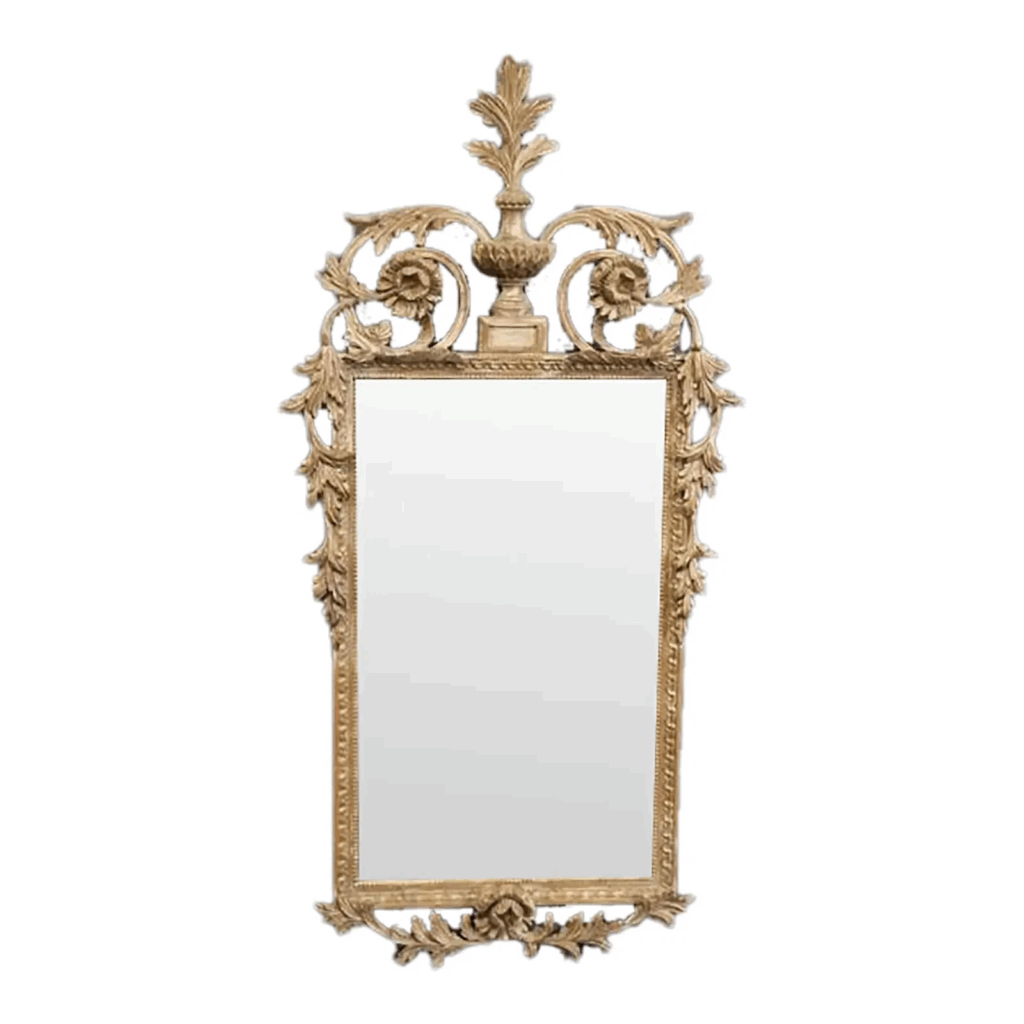
The Louis XV Giltwood Mirror is one of the most celebrated pieces of French craftsmanship from the mid-18th century. Known for its delicate and curvaceous design, it was often used in royal and aristocratic homes during the reign of King Louis XV. The gilded wood frame features intricate scrolls and floral motifs, making it a prized collector’s item. Prices for these mirrors can range from $3,000 to $8,000, depending on the condition and size. Their refined elegance and historical value continue to make them a sought-after piece in the antique market.
This mirror represents the Rococo style, characterized by ornate, asymmetrical designs and soft, flowing lines. The delicate carvings, paired with the shimmering gold leaf, create a luxurious and eye-catching piece. Even after centuries, these mirrors hold a place of honor in the world of antique collecting. The combination of craftsmanship and French history gives them lasting appeal. Many collectors cherish the opportunity to own a piece of French royal design.
Louis XVI Giltwood Mirror
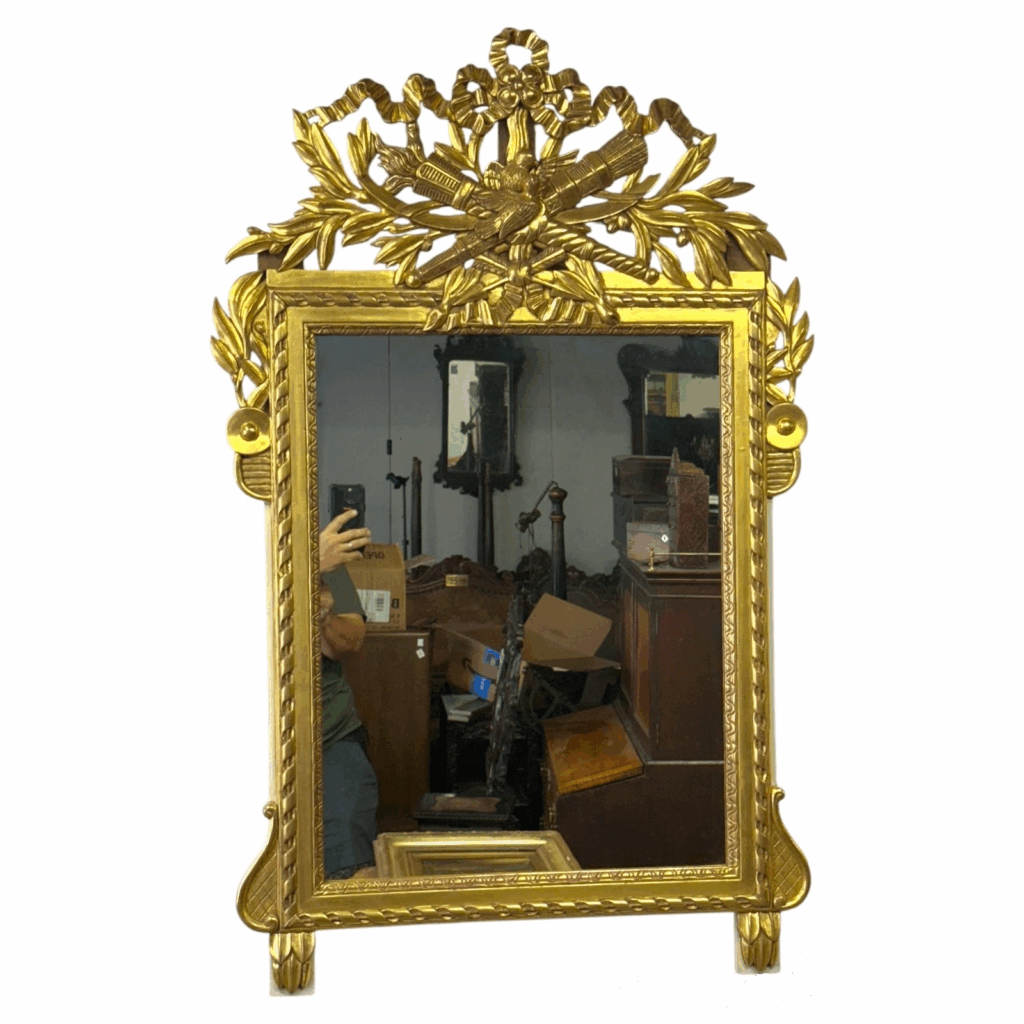
A perfect example of the Neoclassical style, the Louis XVI Giltwood Mirror emerged during the late 18th century. The design reflects the influence of Greek and Roman art, offering clean lines and symmetrical features, in contrast to the more playful Louis XV style. It is a highly desirable piece for collectors due to its timeless elegance and simplicity. The market value for an original Louis XVI mirror can vary from $5,000 to $15,000, depending on its condition and provenance. Collectors often seek these mirrors for their classic aesthetic and strong historical ties.
This mirror features straight lines and a more restrained design, with subtle floral and geometric motifs. The use of gilded wood as the primary material gives it a warm, radiant finish that enhances any room. These mirrors were typically designed for aristocratic French homes and reflected the shift toward more classical tastes. Despite the Revolution’s upheaval, Louis XVI mirrors have maintained their popularity with collectors. Their enduring style makes them a perfect addition to any collection focused on French antique furniture.
Rococo Giltwood Mirror
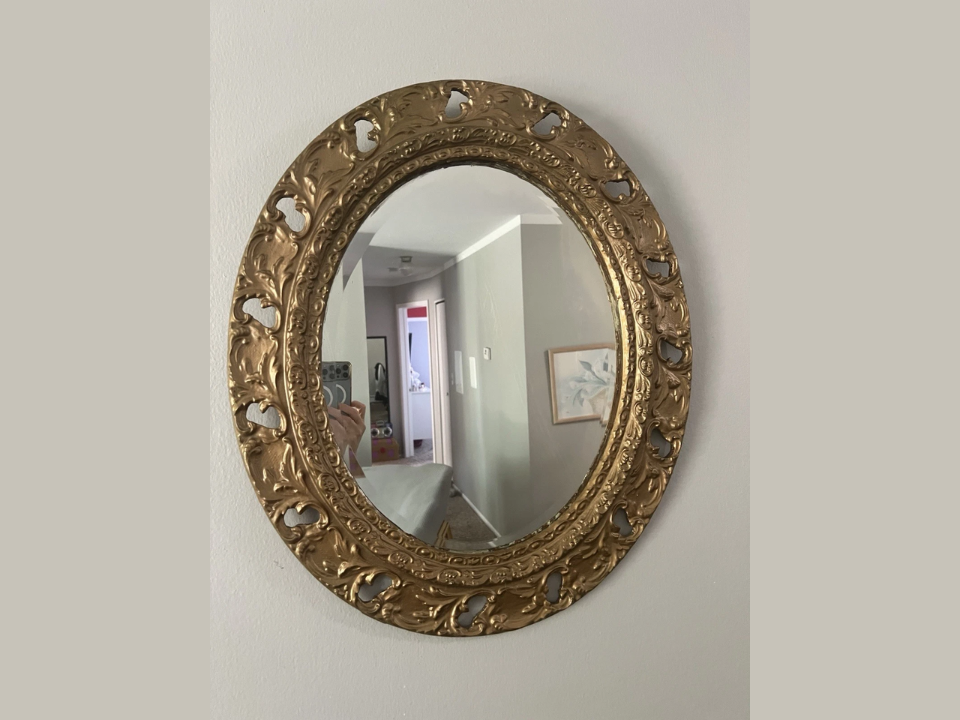
Produced during the early 18th century, the Rococo Giltwood Mirror is renowned for its intricate and elaborate design. The frame is often adorned with flowing curves, floral patterns, and delicate scrollwork, embodying the opulence of the Rococo period. These mirrors are highly valued by collectors due to their rare combination of craftsmanship and decorative appeal. Depending on size and condition, these mirrors can be priced between $4,000 and $12,000. Their ornate detailing and historical significance continue to make them popular among antique enthusiasts.
The Rococo style reflects the exuberance and playful nature of the French aristocracy at the time. The gilding on these mirrors is usually of exceptional quality, showcasing the skill of 18th-century artisans. As the style was designed to create a sense of grandeur, these mirrors often serve as focal points in rooms. Collectors are drawn to them for their ability to add sophistication and luxury to any space. Their appeal extends beyond just functionality, as they represent an era of French design history that was both extravagant and refined.
Empire Giltwood Mirror
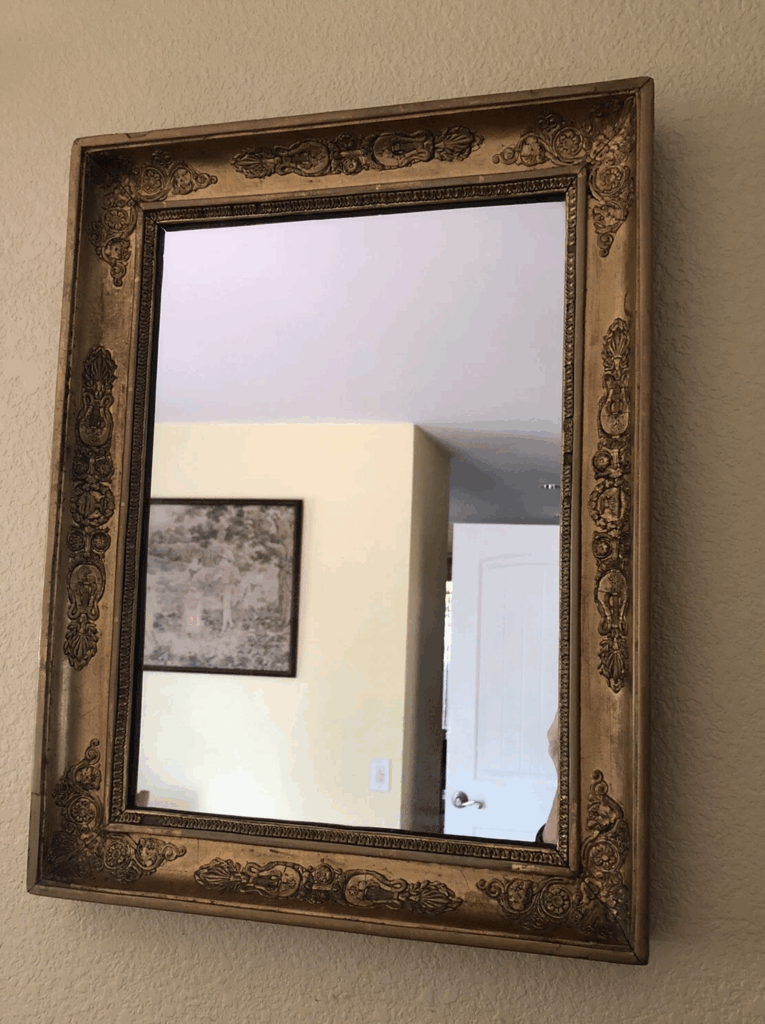
The Empire Giltwood Mirror, produced during the early 19th century, reflects the grandiose style favored by Napoleon Bonaparte’s court. The design typically features bold, clean lines with decorative motifs like eagles, laurel wreaths, and medallions. These mirrors, often found in palatial estates, were designed to convey power and elegance. The current market value for Empire mirrors ranges from $7,000 to $20,000, depending on their size, design, and condition. Their historical significance, coupled with their bold design, makes them highly coveted by collectors.
Empire-style mirrors are characterized by their larger-than-life presence and strong, symmetrical compositions. The gilded wood framing often features polished, gleaming gold leaf that exudes opulence. These mirrors were designed to make a statement, fitting into the neoclassical vision promoted by Napoleon. Their enduring popularity is partly due to their connection with one of France’s most famous historical periods. Collectors prize these mirrors for their sense of regality and their ties to the Napoleonic era.
Baroque Giltwood Mirror
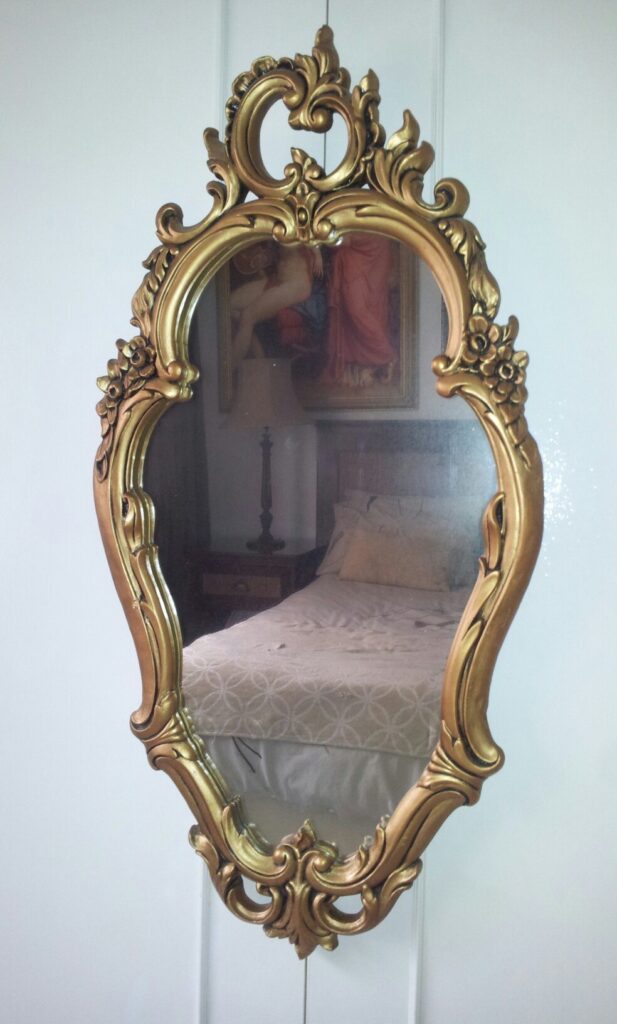
The Baroque Giltwood Mirror from the late 17th century is known for its dramatic and ornate frame. Characterized by bold curves, heavy gilding, and elaborate decorative elements, this mirror is a classic example of Baroque style. It was produced during a time when grandiose design was meant to impress and command attention. Today, the market value for these mirrors ranges from $6,000 to $15,000, depending on their condition and specific design elements. Their heavy, theatrical look remains a favorite among collectors of Baroque art.
These mirrors are often seen as symbols of the extravagant tastes of the French aristocracy. The frame is typically adorned with richly detailed motifs such as angels, acanthus leaves, and floral patterns. Baroque mirrors were often large and positioned as focal points in opulent rooms. Collectors appreciate them for their historical context and the craftsmanship involved in their creation. Despite their size, Baroque mirrors continue to be highly prized in the world of antiques for their boldness and decorative complexity.
Louis Philippe Giltwood Mirror
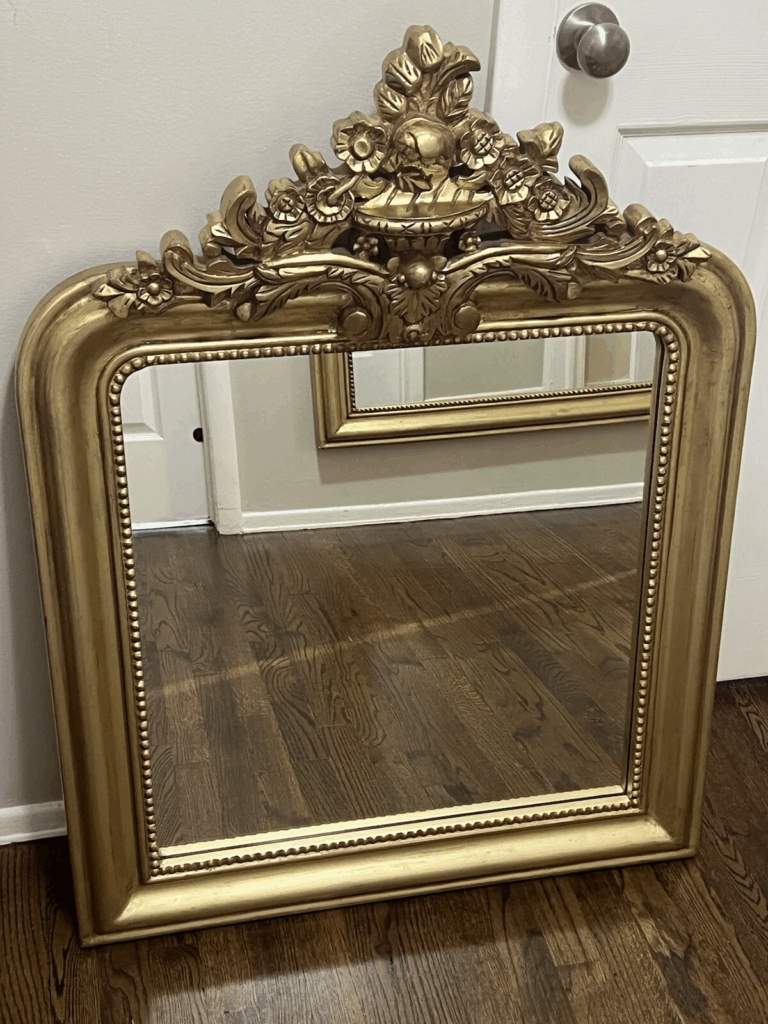
The Louis Philippe Giltwood Mirror, crafted during the mid-19th century, is known for its simple yet elegant design. Unlike earlier more ornate styles, this mirror features a less intricate frame with clean lines and minimal embellishments. Produced during the reign of King Louis Philippe, these mirrors were designed for both function and aesthetic appeal. These mirrors are valued between $2,000 and $6,000, with rare or finely crafted pieces commanding higher prices. Their versatility makes them popular among collectors seeking both simplicity and French history.
The Louis Philippe style is recognized for its refinement and practicality, making it a fitting choice for bourgeois homes. The frame is usually rectangular or oval and is lightly adorned with a few classic motifs. These mirrors were popular during a time of political change in France, and their design reflects a more restrained, neoclassical taste. Collectors seek these mirrors for their elegant understatement and historical significance. They have remained popular due to their ability to blend well with both traditional and modern interiors.
Napoleon III Giltwood Mirror
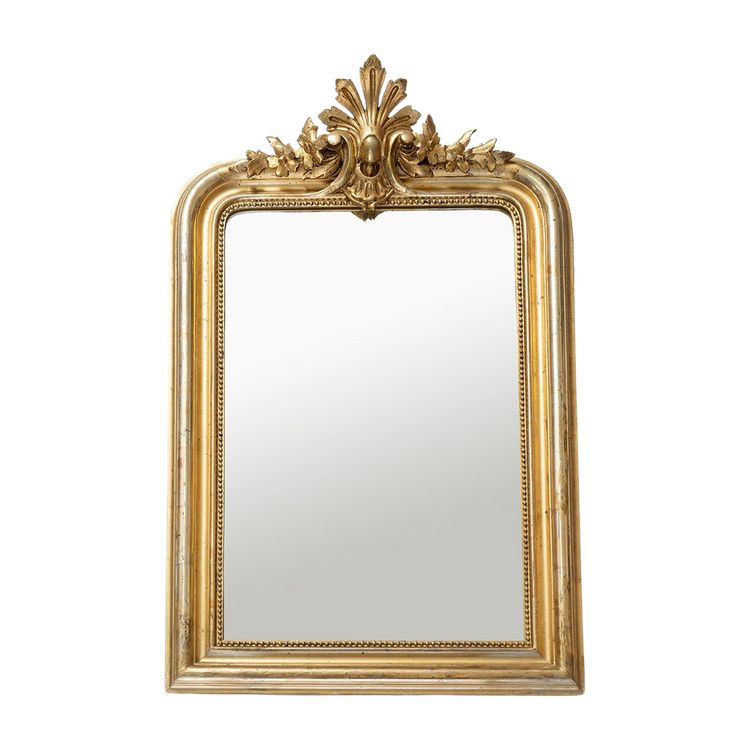
The Napoleon III Giltwood Mirror, created during the mid-19th century, features a grand and highly ornamental frame. Reflecting the lavish tastes of Emperor Napoleon III’s court, this mirror is known for its intricate carvings and rich gold leaf finish. Its oversized design makes it a standout piece in any room. Prices for these mirrors can range from $7,000 to $20,000, depending on the size, condition, and craftsmanship. Napoleon III mirrors remain highly desirable for collectors due to their opulence and historical ties to the Second French Empire.
The Napoleon III style is recognized for its dramatic flair and attention to detail. This period marked a time of renewed imperial grandeur, and the mirrors produced during this era embody that sense of extravagance. The gilded wood frames often feature lush foliage, medallions, and animal motifs, contributing to their visual impact. These mirrors were designed to make a bold statement, often found in royal or aristocratic settings. Today, collectors value these mirrors not just for their aesthetic appeal but also for their connection to one of France’s most iconic emperors.
Louis XVI Giltwood Mirror with Ribbon and Bow Design
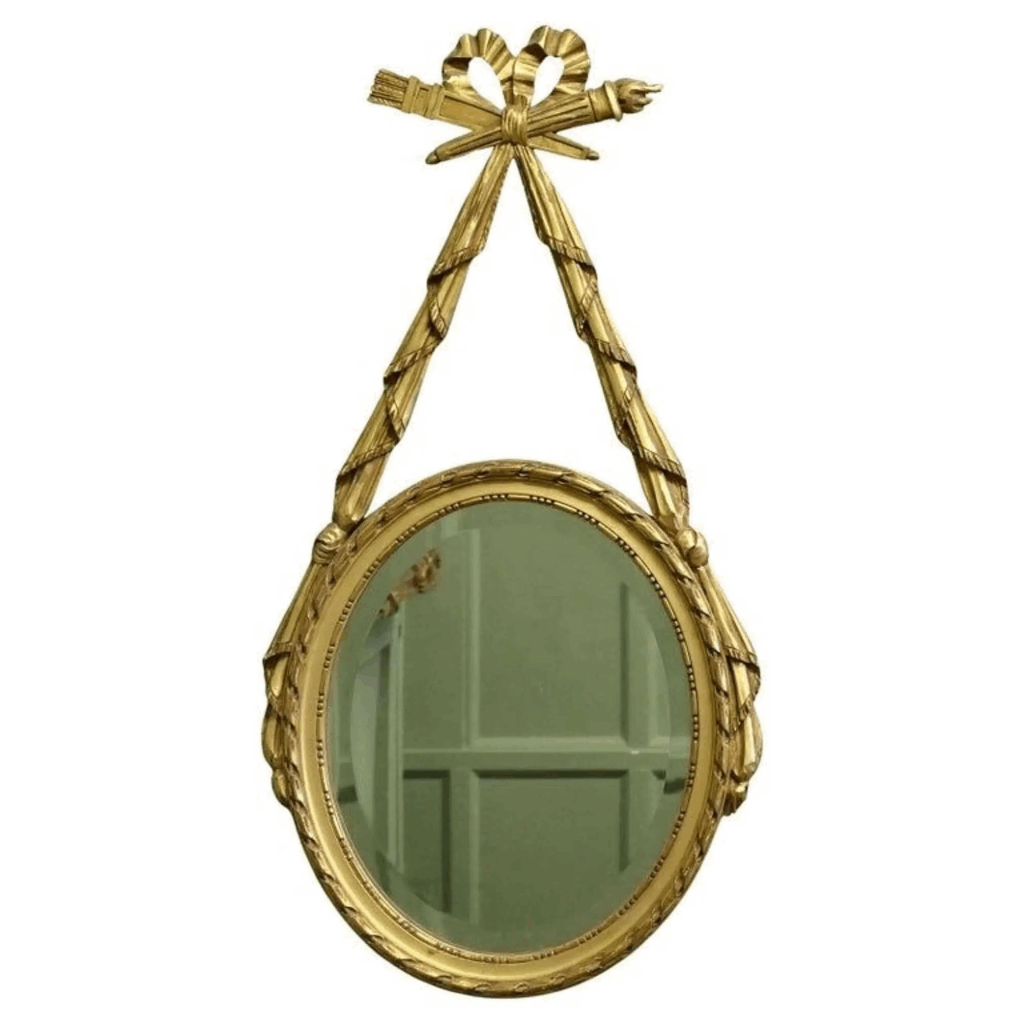
The Louis XVI Giltwood Mirror with a ribbon and bow design, produced in the late 18th century, is a beautiful example of the Neoclassical style. The elegant ribbon and bow detailing at the top of the frame adds a touch of sophistication, while the clean, linear design reflects the simplicity of the period. This mirror was popular among the French nobility for its understated elegance and refined charm. The current market price for this style of mirror is typically between $4,000 and $10,000. Collectors are drawn to its graceful design and historical significance.
This mirror’s design is a direct reflection of the Neoclassical influence, which sought to return to the ideals of ancient Greece and Rome. The ribbon and bow motif symbolizes loyalty and affection, making it a popular choice for more intimate settings. The soft gilding adds a luminous quality that makes these mirrors especially desirable. They were often used to enhance the decor of private chambers or salons. As a result, Louis XVI mirrors with this design remain one of the most sought-after items for collectors of French antiques.
Rococo Revival Giltwood Mirror
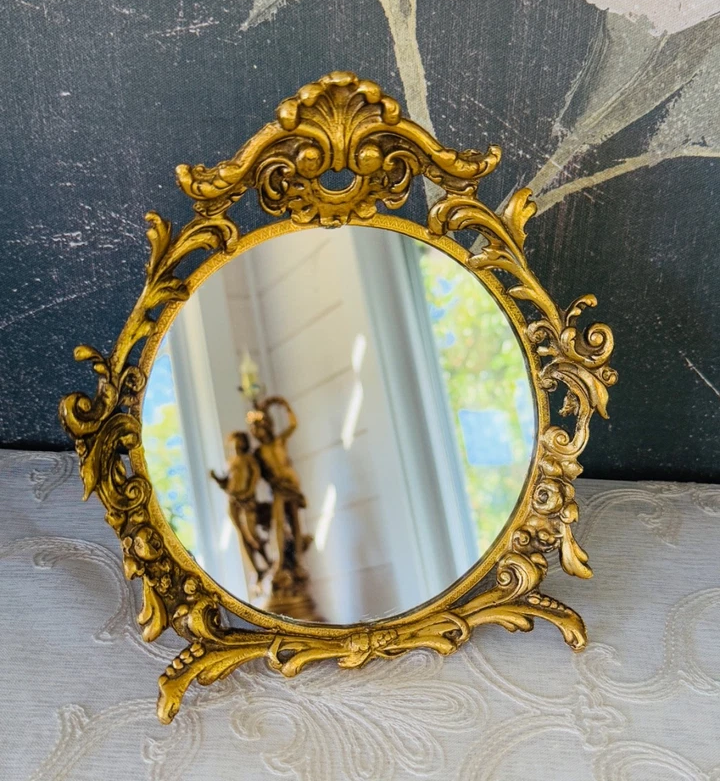
The Rococo Revival Giltwood Mirror, produced during the mid-19th century, is a splendid example of the 19th-century fascination with earlier French Rococo styles. The mirror features elaborate, flowing curves and intricate carvings that echo the lavish designs of the 18th century. It was part of the Rococo Revival movement, which sought to bring back the opulence of the Louis XV era. These mirrors are highly valued, with prices ranging from $3,000 to $10,000 depending on size and condition. The delicate and ornate frame continues to capture the attention of collectors.
Rococo Revival mirrors are known for their opulence and complexity, often adorned with detailed floral and shell motifs. The gold leaf finish enhances the decorative elements, giving the mirror a luminous quality. These mirrors were made during a period of industrial expansion, which allowed for greater production and craftsmanship. Today, they are seen as a bridge between the past and the growing taste for Victorian-era aesthetics. Collectors prize these mirrors for their beauty and the historical context they represent.
Louis XV Giltwood Mirror with Beveled Glass
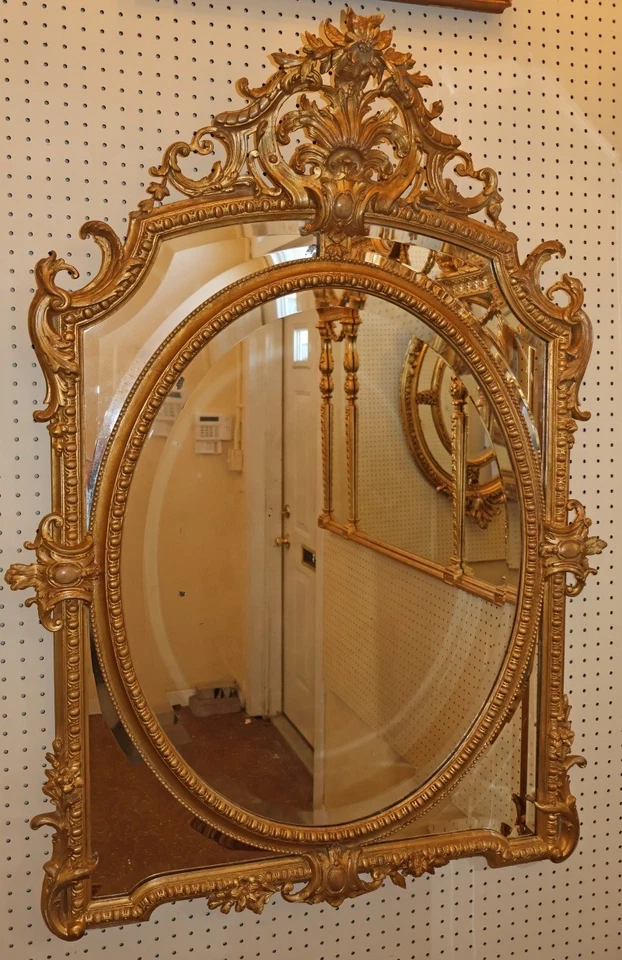
The Louis XV Giltwood Mirror with beveled glass is a beautiful representation of the French Rococo style from the mid-18th century. This mirror features an ornate, heavily gilded frame with curvaceous, flowing lines and intricate detailing. The beveled glass adds a touch of refinement, allowing light to reflect off its surface, enhancing the mirror’s luxurious feel. Market prices for these mirrors range from $5,000 to $12,000 depending on their condition, size, and the quality of the beveling. Collectors highly value these mirrors for their craftsmanship and connection to the height of French opulence.
The addition of beveled glass was a distinctive feature that set this mirror apart from others of the time. It was designed to capture and reflect light, adding to the sense of grandeur in any room. The gilded wood frame, with its signature scrolls and floral motifs, showcases the exuberant artistry of the Rococo period. Louis XV mirrors are often prized for their beauty and their historical significance, as they represent a period when France’s aristocracy was at its peak. These mirrors continue to capture the imagination of collectors who seek both artistry and history in their acquisitions.
Collectors appreciate their intricate details and the stories they tell about a past era. These mirrors remain a valuable addition to any collection, continuing to shine with their lasting charm.
This article originally appeared on Avocadu.
